Why ABA Therapy is the Right Fit for Lucky
September 30, 2021
September 30, 2021
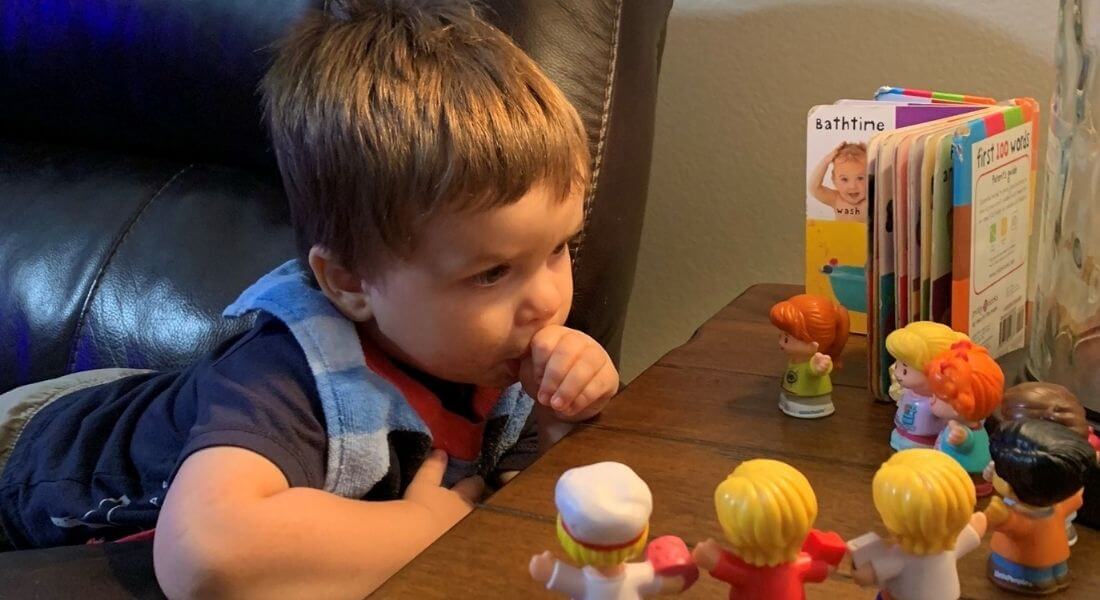
As you surely know, parents want the best for their kids. The best in health. The best education. The best friends. The best opportunities to thrive. For families of children with autism or special needs, that also means the best therapy and treatment.
Lucky’s mom, Sarah, is no different. So, when she saw her son was not making the development gains she hoped for in his former therapy setting and school, she decided to make a change. A researcher by nature – and occupation – she dove into finding the best therapy options for autism spectrum disorder (ASD).
Here’s what their experience has been like:
At the time, Lucky attended a developmental preschool only three hours a day, four days a week. It was a three-to-one child-to-teacher setting. Before that, it was one hour, once a month for in-home occupational therapy and speech therapy, but the provider did not specialize in children with ASD. Sarah told us both options helped a little, but that Lucky needed more.
“It was a challenge to get him to engage. The teachers would prompt him to come to his seat or to the carpet for circle time, but if he didn’t come the first time, they’d have to continue working with the other kids,” said Sarah. “He’s like a quiet ninja; he doesn’t respond and you won’t even know. The squeaky wheel usually gets the grease, so since he didn’t need behavioral management, his needs were often prioritized less in those environments.”
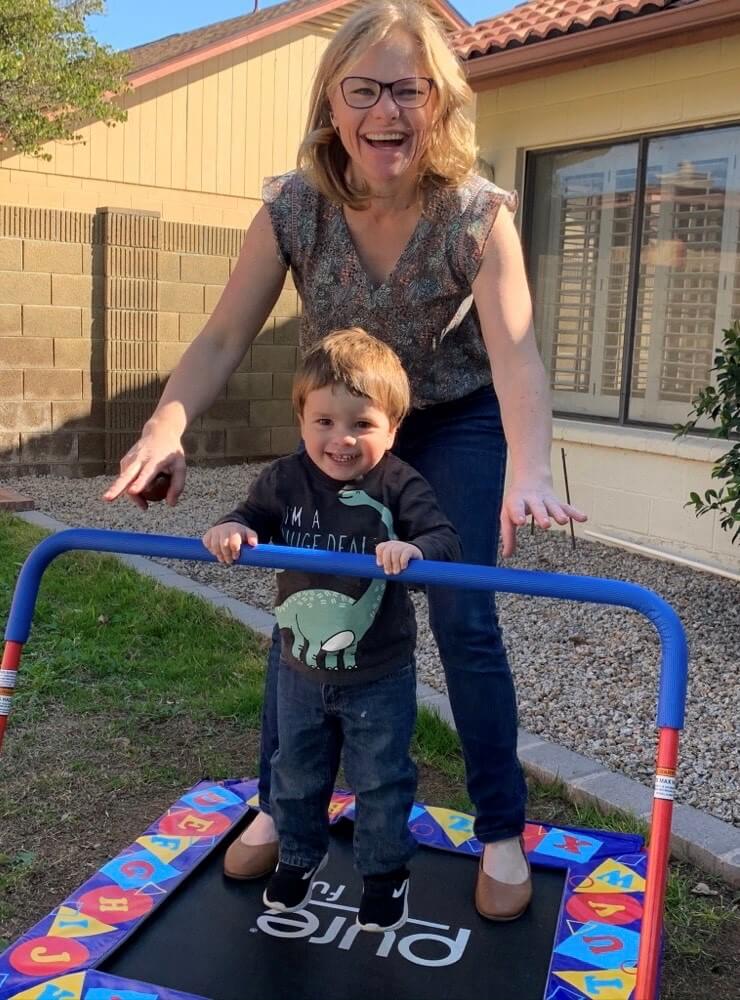
While searching for the ideal treatment setting and provider for Lucky, Sarah came across a wide range of opinions. Because it was such a hot topic, the researcher in her drove her to look at the studies. She took the experience of others into consideration, while also reading about patient goals, gains and outcomes through applied behavior analysis (ABA therapy) and other therapies.
“I decided we needed a plan and we needed a BCBA. Some goals needed to be the most basic goals. Based on his autism evaluation with the diagnostician, some of his developmental levels were that of an 11-month-old – an infant – and it was clear we needed one-on-one therapy. The group scenario didn’t work as well for him,” said Sarah.
That is when she came across Hopebridge Autism Therapy Center in Glendale, AZ. He started at the clinic in April 2021, soon after she called for an ABA evaluation. This was a welcome surprise after their lengthy journey to an autism diagnosis.
For background, Sarah told us they began noticing that Lucky experienced milestone delays at 9 months and 12 months of age. They worked with the pediatrician to intensively try to make up ground. This meant at 12 months, he would meet the 9-month milestones, but would then miss those for his current age. By 18 months, they knew he likely had ASD, but were on an 11-month waitlist—only to wait even longer when the time arrived because of the COVID-19 pandemic. At about 2 ½ years old, Lucky received his formal autism diagnosis.
“They let him be his individual, silly self. They’re not trying to make him not be him.”
Sarah, mom to Lucky
Fast-forward to Lucky’s time at the Hopebridge center, at almost 4 years old, he is thriving with the structure and personalization that his ABA therapy program offers. It also gives Sarah the time and resources to support him as his mom, rather than trying to serve as “therapist” for him.
What Sarah appreciates most about ABA therapy is that it allows him to be himself, while simultaneously helping him build the skills he needs to live more independently and comfortably.
“Hopebridge works with families like ours to make decisions based on the needs of the child, “said Sarah. “None of the methods Hopebridge uses in ABA are an attempt to change his personality in any way. They just allow him to better communicate his feelings and wishes. They let him be his individual, silly self. They’re not trying to make him not be him.”
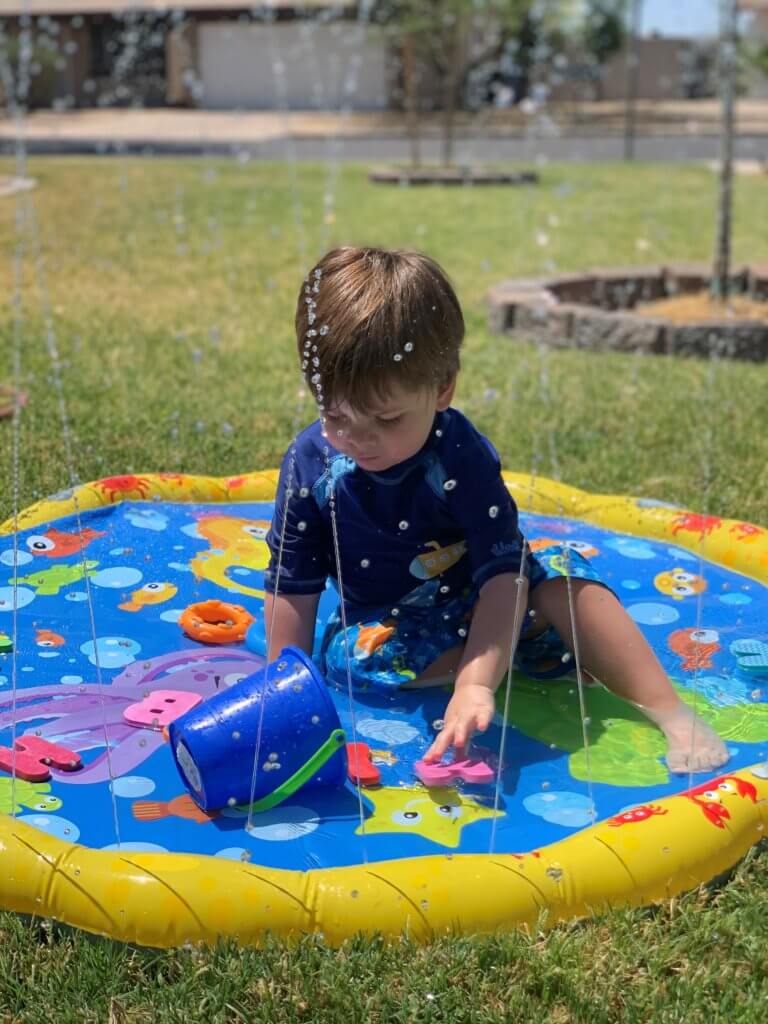
His Hopebridge therapy team never wants him or his family to feel shameful of his behaviors, like hand-flapping, for instance. Rather than trying to stop him from stimming all together, they provide prompts for the moments when he needs to have his hands available. Sarah told us they also guide him to more appropriate behaviors, when needed, such as giving him something to chew on instead of biting or licking other items around him, which could be a health hazard.
“The fact that every day he gets up and pulls me into the garage, I know I made the right choice. He’s reaching his arms up and grabbing me because he wants to go to Hopebridge … even on weekends!” said Sarah.
What does Lucky enjoy the most about Hopebridge? That he gets to play so much! Sarah told us that he loves the in-center gym.
“There are so many things for him to engage with at Hopebridge. Plus, his therapy team tells me what he likes and then I can get them for him to engage with at home instead of just screen time. I have so many toys at home but nothing used to keep him entertained. Now I get to see actual things he likes, as well as learn techniques through parent training that I can use to engage him. We’re rediscovering toys together,” said Sarah.
“Since it’s a full-time program, he gets so much activity that he’s always ready for bed at night, too!”
Sarah’s professional experience includes studies around neurodevelopmental disorders, so she began recognizing some of the symptoms of autism in her son when he was as young as 9 months old. Some of the signs were around his motor development and repetitive and restrictive behaviors, especially related to his hands.
“He thought his hands were really cool. He would look at them for hours,” said Sarah. “Then as soon as he started moving and playing with toys, I noticed he didn’t really ‘play’ with them. He just moved them to different spots and stacked them. In the beginning I thought maybe they didn’t have the right feng shui for him. But then he had some delays in language development and major regressions in behavior.”
Sarah told us much of his regression began around 18 months. He stopped looking at others and never mirrored facial expressions. He is hyposensitive and doesn’t get overwhelmed or startled by a lot of noise or people. Sarah was able to renovate two houses and he slept right through it! This has been good in some ways, but is also a challenge, because if someone were to honk or yell for danger, he would not respond.
In just a few months since joining Hopebridge, however, they have already seen the payouts.
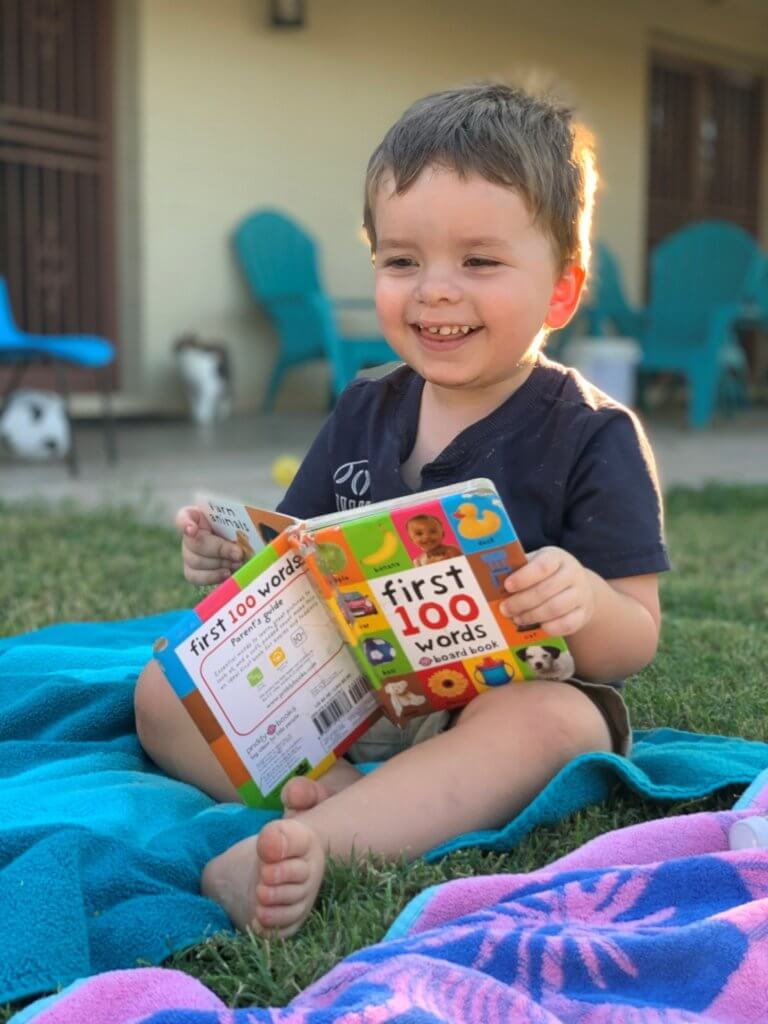
“Before, some of our family members would shout to get his attention. I’d have to tell them, ‘He’s not voluntarily ignoring you; to him, you just don’t exist,’” said Sarah. “The guided, direct attention and engagement from one-to-one therapy has helped. He has more global awareness that people exist in his realm. He still may not respond to commands or his name, but it is huge that he will now look at people when they walk into the room.”
Communication was also a struggle for Lucky, at times. He used to grab any hand and pull them to what he wanted. Now he will point and tap to indicate things that he wants, which is a big win for the family.
Lucky would previously only use scripted language from his favorite show, “Bubble Guppies.” It was random, though incredibly accurate. Since starting ABA therapy, Lucky does not yet use spontaneous functional language, but his scripting behavior is more functionally appropriate. He now uses lines that make sense for the situation. For example, he says things like, “Are you ok? Are you ok?” and if he sees people, he might say, “Hi, Gilly. Hi, Gilly.”
The Picture Exchange Communication System (PECS) has also been a useful tool in therapy and at home. Now that Lucky is able to communicate his wants and needs through it, it has also minimized other interfering behaviors. Introducing first-then tools and language have also been beneficial. He has fewer outbursts and transitions have been easier now that he has more awareness of what will occur, such as “first we eat, then we go,” or “first shoes, then go.”
“Things haven’t completely turned around, but I see we can do hard things together. I’m focused on observing the small victories; the shades of grey along that line of progress,” said Sarah. “It’s exciting when he looks at me or says a new word. Maybe it’s a word that is completely unrelated to the situation, but he still said it. We let those moments trigger positive responses.”
In addition to missing some speech and language-related milestones, Lucky also had trouble feeding from an early age. He was born with a cleft lip and had surgery at 4 months old, which caused some feeding challenges. Since he had experienced tape around his mouth from the surgery, Sarah assumed he did not like his face to be touched. Even with these challenges, he was originally adventurous with eating. Then he began to regress.
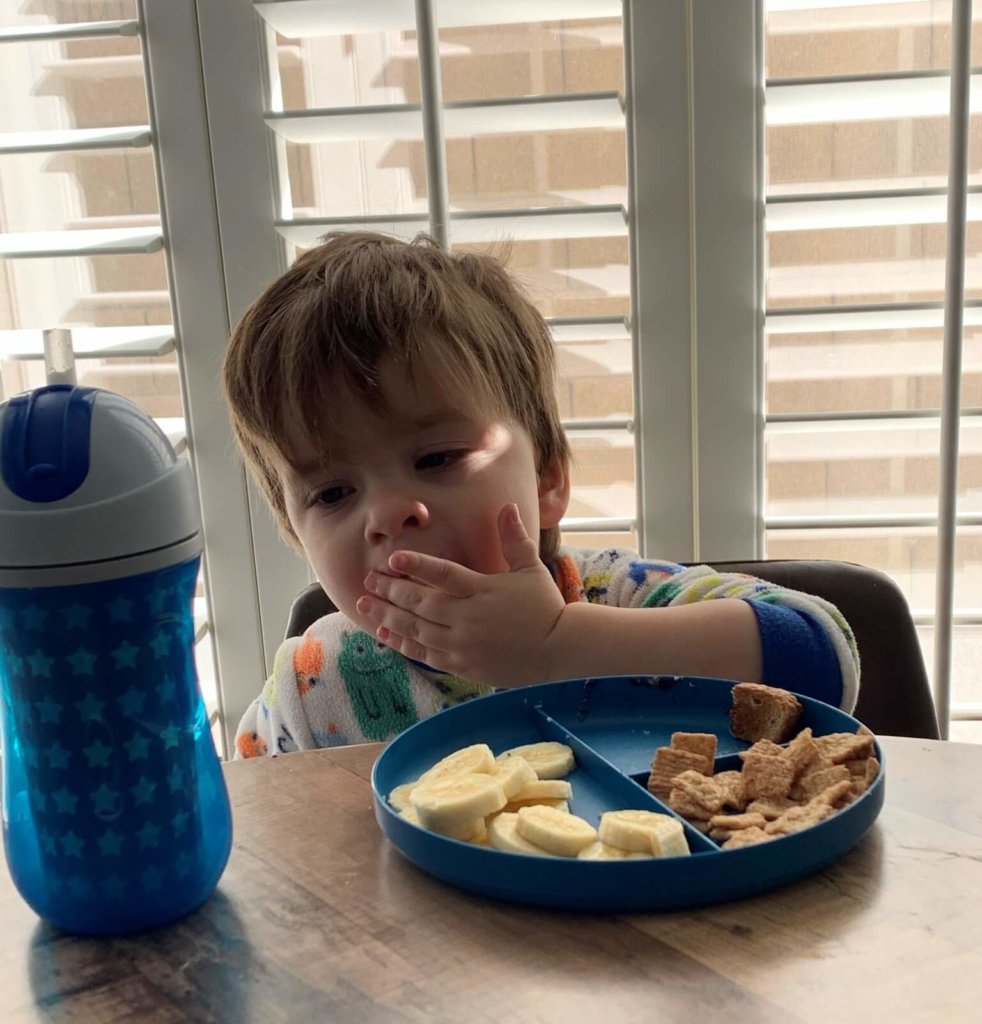
When he started at Hopebridge, he would only eat Goldfish crackers. Since beginning ABA and occupational therapy at the center, plus separate feeding therapy, he will eat different flavors of Goldfish crackers (including the multi-colored and veggie crackers with carrot and tomato), as well as Ruffles potato chips, pizza, bananas and Cinnamon Toast Crunch. Some of these foods are still hit or miss, depending on the day, but there is progress! He used to throw other foods he didn’t want, but now will politely say “no” or put it back if he is not interested in trying it.
“Since beginning therapy, I have to be more aware because he knows what he likes and can now find them. The other day, his chips were on the counter and there were some in a bowl. I walked into the kitchen and he’s on the counter, sitting on top of the stove. He had dragged a chair from another room and climbed up to get the chips,” said Sarah.
“My sisters were like, ‘uh oh,’ whereas I was actually ecstatic because that’s executive function! If my kid was neurotypical, I might be angry, but he’s taught me to celebrate the little joys like this.”
“We’re very lucky to have family support in this journey, but I also appreciate that we have a team at Hopebridge that works with us to process everything. Before this, some people suggested I was reading too much into everything, and I sometimes believed it because it was just the two of us,” said Sarah.
“I’m comforted by the daily reports from Hopebridge. They remind me I’m not just a helicopter parent—his therapists see it, too! They support us on this journey. They’re like an extended family. They tear up with me at times. It’s rewarding for my son, but also for me to have someone care so much about my kid.”
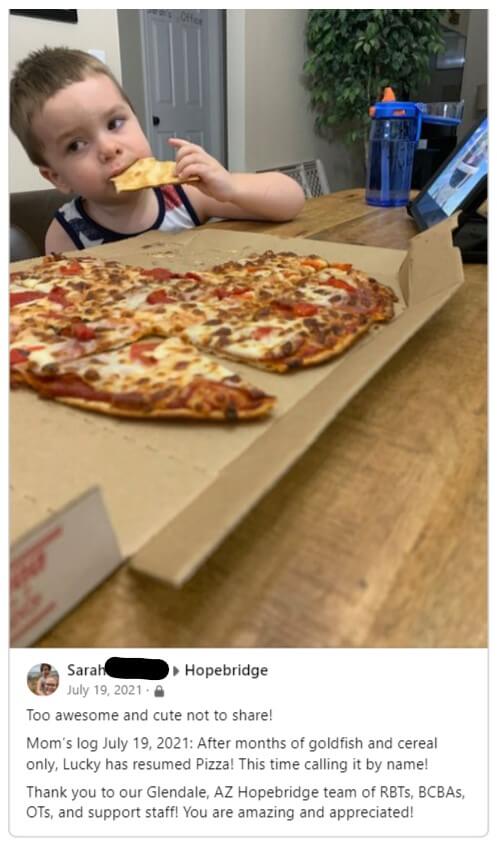
“They support us on this journey. They’re like an extended family. They tear up with me at times.”
Sarah, mom to Lucky
This is why we do what we do at Hopebridge. We want to serve as an extension of you while your children are in our care so we can help them – and you – lead your best lives.
If you are waiting for answers for your own child, or if you need more support on this autism journey like Sarah and Lucky, we want to help you by starting with a diagnostic assessment or ABA evaluation. Visit our website and fill out the simple form to get started with us.
*Informed consent was obtained from the participants in this article. This information should not be captured and reused without express permission from Hopebridge, LLC. Testimonials are solicited as part of an open casting call process for testimonials from former client caregivers. Hopebridge does not permit clinical employees to solicit or use testimonials about therapeutic services received from current clients (Ethics Code for Behavior Analysts 5.07-5.08; BACB, 2020). Hopebridge does not provide any incentives, compensation, or renumeration for testimonials provided by a former client or client caregiver.